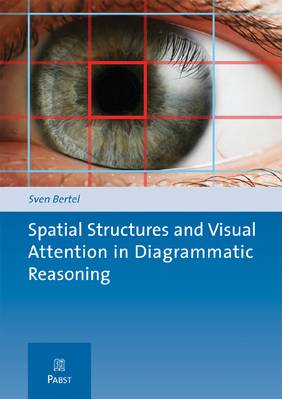His study "presents original theoretical, empirical and computational research into the related cognitive, perceptual and computational processes and representations. For the case of human reasoning with diagrams, it analyzes the specifics of fundamental reasoning and communication asymmetries that exist in shared human computer reasoning and it identifies sets of involved representational and procedural key factors and bottlenecks; it proposes the notion of anticipatory cognitive computing in which predictive cognitive processing models can inform the computational part in the reasoning duet about the human's current cognitive state, such as regarding mental problem solving properties (e.g., preferences in mental model construction or direction of attentional focus).
This thesis proposes a methodological framework for live anticipatory cognitive computing that is directed at enabling the computational reasoning partner to better adapt to current mental processes and states of the human partner, and thus to allow for more efficient and effective human computer collaboration to emerge, leading in turn to a more efficient and effective solving of spatial configuration and design problems. Imminent implications are discussed for design research and practice as well as for other related fields.
Specifically, this thesis targets the interrelations between visual fixations, the visual focus of attention in diagram based reasoning and foci in higher level reasoning (e.g., in spatial problem solving). In doing so, it breaks ground for a new interdisciplinary field of spatial cognition research that sits at the junction of diagrammatic reasoning, visual attention and human computer collaboration. The thesis chooses a model based approach for describing human spatial problem solving and it capitalizes on human individual and general preferences in model construction and selection; it proposes a combination of spatial mental model and focus based interaction schemes and instantiates the schemes in a decision model in which information of spatio temporal distribution of visual attention triggers model based selection processes.
On a fundamental level, the thesis addresses issues of how the preferential construction of spatial mental models can be stabilized or destabilized by actions of the computational reasoning partner and on how and when visual fixation data can be of help for assessing human cognitive states in diagram based spatial problem solving.
Finally, the thesis presents the design and implementation of an integrated demonstrator system for the proposed methodological framework. The characteristic traits of model and focus based computing and its effects are demonstrated for an exemplary class of diagrammatic configuration problems and based on the capturing and live analysis of eye fixations and other data.
The thesis takes an inherently interdisciplinary stance in the presented discussions and proposed approaches. It draws upon and contributes to the sets of methods available in informatics and the cognitive sciences. It has additional ramifications for conceptualizing cognition oriented human computer interaction in general, and for constructing human computer interfaces for design and configuration in particular."
Spatial Structures and Visual Attention in Diagrammatic Reasoning
Bertel, S.






















